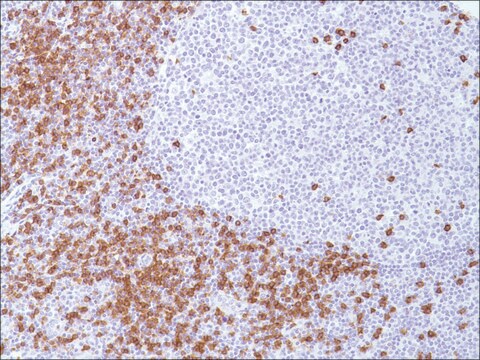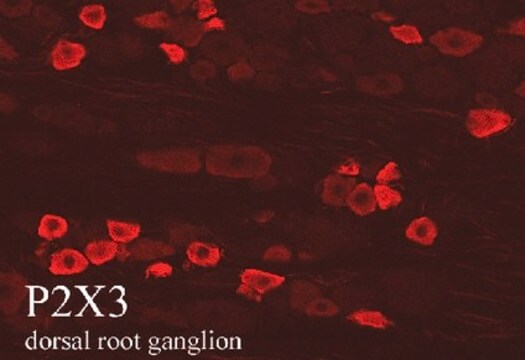Kluczowe dokumenty
SAB4200544
Anti-Synaptophysin antibody, Mouse monoclonal
clone SVP-38, purified from hybridoma cell culture
Synonim(y):
Monoclonal Anti-MRXSYP, Monoclonal Anti-SYP, Monoclonal Anti-Synaptophysin1, Monoclonal Anti-Synaptoporin, Monoclonal Anti-Syp1, Monoclonal Anti-p38
About This Item
Polecane produkty
pochodzenie biologiczne
mouse
Poziom jakości
białko sprzężone
unconjugated
forma przeciwciała
purified immunoglobulin
rodzaj przeciwciała
primary antibodies
klon
SVP-38, monoclonal
Formularz
buffered aqueous solution
masa cząsteczkowa
antigen 38 kDa
reaktywność gatunkowa
rat, human
stężenie
~1.0 mg/mL
metody
immunohistochemistry: 10-20 μg/mL using formalin-fixed paraffin embedded rat cerebellum.
indirect immunofluorescence: 10-20 μg/mL using B35 cells.
western blot: 1-2 μg/mL using newborn rat brain extracts.
izotyp
IgG1
Warunki transportu
dry ice
temp. przechowywania
−20°C
docelowa modyfikacja potranslacyjna
unmodified
informacje o genach
human ... SYP(6855)
Opis ogólny
Specyficzność
Immunogen
Zastosowanie
- Immunoblotting
- Immunohistochemistry
- Immunofluorescence
Działania biochem./fizjol.
Postać fizyczna
Oświadczenie o zrzeczeniu się odpowiedzialności
Nie możesz znaleźć właściwego produktu?
Wypróbuj nasz Narzędzie selektora produktów.
polecane
Kod klasy składowania
10 - Combustible liquids
Temperatura zapłonu (°F)
Not applicable
Temperatura zapłonu (°C)
Not applicable
Wybierz jedną z najnowszych wersji:
Masz już ten produkt?
Dokumenty związane z niedawno zakupionymi produktami zostały zamieszczone w Bibliotece dokumentów.
Active Filters
Nasz zespół naukowców ma doświadczenie we wszystkich obszarach badań, w tym w naukach przyrodniczych, materiałoznawstwie, syntezie chemicznej, chromatografii, analityce i wielu innych dziedzinach.
Skontaktuj się z zespołem ds. pomocy technicznej








